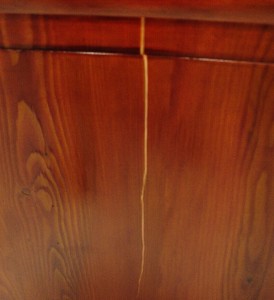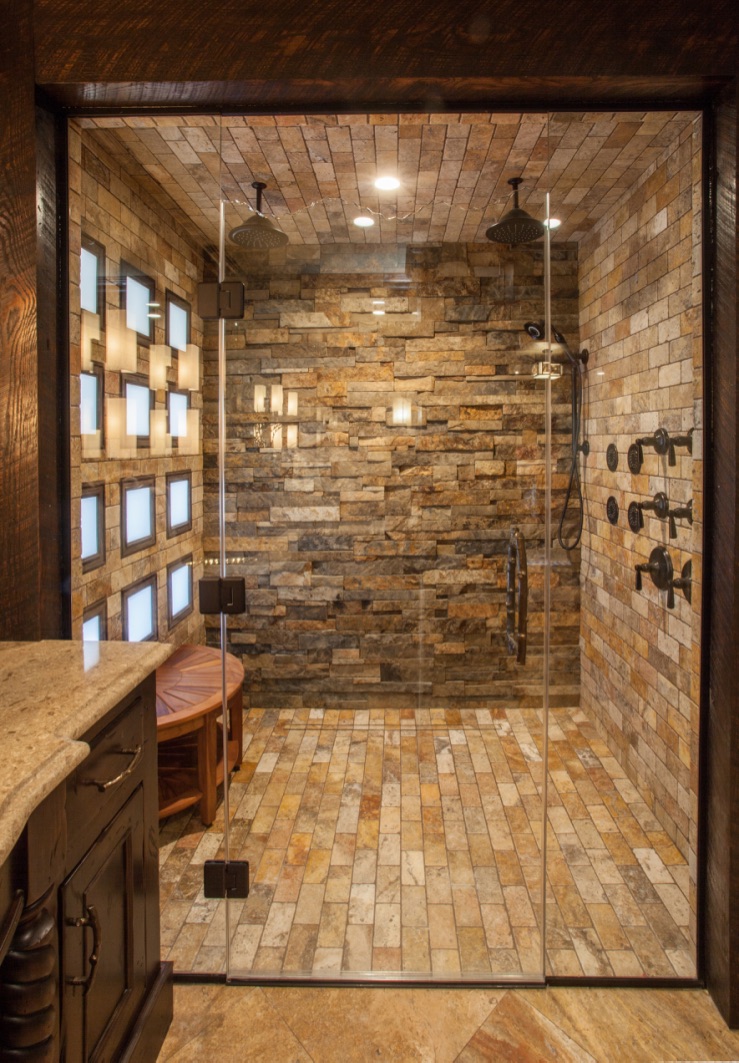If you have found yourself drawn to any of the apartments in "Only Murders in the Building", it probably says something about your personality. Check out what the design styles of Charles-Haden Savage, Oliver Putnam, or Mabel Mora says about you!
Beware Of The Effects of Dry Winter Air On Your Home
I should have listened to my sinuses. But, it was the crack along the entire top of our antique buffet…the first piece of furniture that my husband and I purchased together…that got my attention. The air in our house was lacking moisture to a detrimental level and it was time to act.
You surely have heard about how dry, winter air affects the body: itchy, flakey skin; irritated nasal passages & eyes; nose bleeds; weakened immune systems; joint paint and stiffness; and always feeling cold, not to mention that dry skin makes you look older and increases wrinkles. Who wants that?
Your home can have similar symptoms and without addressing the moisture levels in your home, you too may sacrifice more than just your health.
 WOOD
WOOD
First of all, wood needs moisture. Take my buffet as an example. Wood expands and contracts to accommodate moisture levels and an extended period of extra-dry conditions can cause wood to split, crack, and warp. Cabinetry, furniture, and wood flooring all react poorly to dry air. A recommended range of stable relative humidity in your home should be between 30%-50%. If you have a piano in your home, poor moisture levels can cause it to go out of tune quicker and make it more difficult to stay tuned. Protect your investments and be aware of your home’s humidity levels.
FABRIC & CARPETING
Have you ever pulled up your blankets and seen little “sparks”? That is static electricity and it’s caused in part by dry air, but also by what fibers make up your upholstery and carpet, and what products your clothing and shoes are made of when you walk on or rub against textiles in your home. The moisture in your home will reduce this by, in essence, coating the fibers of all surfaces, making it less likely to conduct electricity. (This is the most basic explanation…more on static electricity can be found here.) Static electricity can be a culprit in computer and other electronic malfunctions, as well as even causing fires if paired with certain chemicals and special situations.
Increasing the humidity in your home can also reduce the amount of air-borne allergens caused by dust, bacteria and pet dander. These settle onto furniture, rugs and draperies and are kicked up when you sit on the sofa or walk across the room. This could be why people are suffering from allergies even when the outdoor climate is not conducive to pollen or other seasonal allergies. In my own case, I have noticed a ridiculous amount of dust that is not helped by cleaning. By adding moisture to the air, I will reduce this and my need to clean. Plus, my quality of life will be better since those particles are not making into my lungs!
HEATING/COOLING
Having the right amount of moisture in your home can even save you money in your heating bill! Moist air will feel warmer at a lower temperature than dry air, so even little changes can improve your energy usage in the long run.
HOW TO REMEDY DRY AIR IN YOUR HOME
The most obvious choice is to get a good humidifier that will accommodate the size of your home. Maybe that is getting several different humidifiers for different zones or floors. There are even whole house furnace humidifiers to tackle the whole place at once. There is some debate on the use of warm-air versus cool-air humidifiers and you’ll just need to research which is right for you.
There are things you can do at home that don’t cost a dime, though! Here are some options from eHow.com that anyone can do with very little effort that can help your home during these cold, dry, winter months:
- Place a pot of water on your radiator, wood stove, register or baseboard heater. As the heater heats up, the water will evaporate into the air, adding moisture to your home. If your heater is narrow, as in the case of a baseboard heater, a narrow dish such as a bed pan will work nicely.
- Set pots of water near the heat source, or simply leave water out on counter tops or in front of sunny windows. Add a decorative touch to the water by putting water in glass bowls and adding colored marbles or stones.
- Dry your laundry indoors, without using the dryer. Hang towels and other linens over doorways or on the back of chairs, or purchase an indoor clothes drying rack. You will add moisture to your indoor air and save money by not using the dryer.
- Add some houseplants to your home. Not only will you be moisture to the air simply by watering the plants, but plants naturally add moisture to the air all by themselves. Plants recycle water by a process known as “transpiration.” The United States Geological Survey explains that transpiration occurs as moisture travels through plants from the roots to pores on the bottom side of the leaves. Moisture is released through the pores and into the atmosphere. The more plants you have in your home, the more humidity you will have.
- Cook with the lids off. When you’re boiling water or vegetables, leave the lids off so that the excess moisture can infiltrate the air.
- Leave a pot of water on top of the stove when you have something in the oven. The top of the stove naturally heats up slightly when you are baking, which will help the water in the pot evaporate.
- Fill a crock pot with water and keep it on low with the lid off. This is an especially good measure to take when you want added humidity during the night hours, and using a crock pot is much more energy efficient than boiling a pan of water on a stove top.
- Take your shower with the bathroom door open. Not only will this help humidify your home, it will help prevent mildew in the bathroom.
- Get some fish. A fish tank with the lid partially open will also increase the air’s moisture content.
- Buy an indoor fountain. Not only will the sound of the water help you relax, the humidity will keep you skin and membranes moist. Indoor fountains are especially beneficial in bedrooms, as they add to overall relaxation.
- Some suggest venting your dryer into your home, rather than outside. (You can do this by securing the end of your dryer hose with pantyhose and letting the warm, moist air generated from your dryer become the humidifier. Be sure to block the outdoor vent to keep cold air out.) However, unless you purchase a home venting kit, which prevents excess moisture from entering the room anyway, this is not a great idea. Dust particles, pet hair and fabric softener fibers can enter the air and irritate allergies. (I have done this and my sinuses were very happy with me immediately, but I did notice dust did enter the air. The pantyhose did a pretty good job catching any small lint from the dryer, but you will still probably want to do this sparingly, and change out the panty hose after each drying cycle. Who wears knee-highs anymore anyway? Put them to good use.)
Read more: How to Add Humidity Inside a House Without a Humidifier



